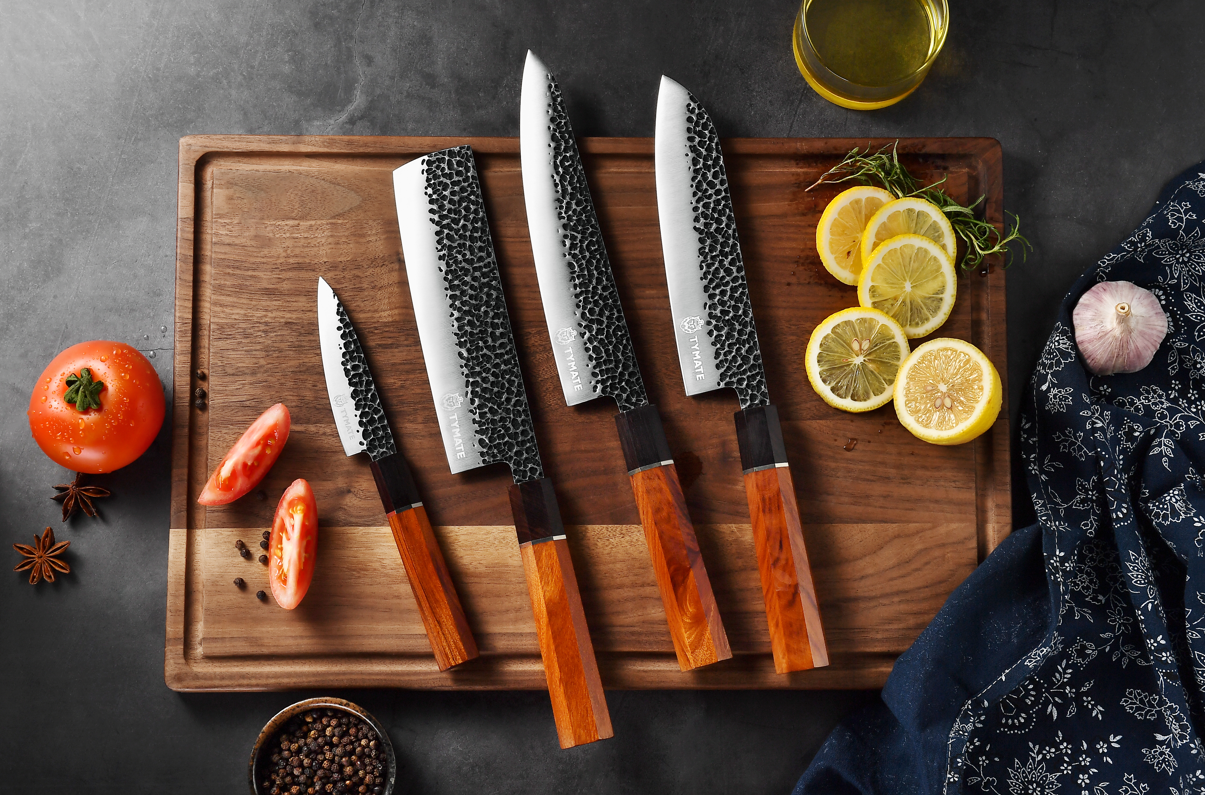In our last post, we took an exciting journey through the Land of the Rising Sun, uncovering the mystique surrounding the Japanese Chef Knife. Now, having chosen your perfect blade, the question arises: How do you care for, store, and protect your new kitchen companion? Well, look no further because today we’re breaking down the basics of Japanese Chef Knife maintenance.
Caring For Your Japanese Chef Knife
Caring for your Japanese chef knife extends its lifespan and ensures it continues to perform at its best. Here’s what you need to know:
- Cleaning: Cleaning your knife right after use is crucial. Use warm soapy water and a soft sponge, then rinse and dry immediately. Don’t ever use a dishwasher – it can damage the knife’s edge and handle.
- Sharpening: Regularly sharpening your knife maintains its razor edge. It’s best to use a whetstone and follow the manufacturer’s guidelines regarding the angle.
- Honing: This is a process different from sharpening. A honing steel realigns the knife edge between sharpenings and should be done often, even daily depending on the use.
Storing Your Japanese Chef Knife
Proper storage of your knife not only protects the blade but also keeps you safe. Here are some tips:
- Knife Block or Stand: These provide individual slots for each knife, protecting them from knocking against each other and causing damage.
- Magnetic Strips: A wall-mounted magnetic strip keeps your knives accessible, secure, and prevents damage. Just ensure you remove the knife pulling it off gently without scraping the edge.
- Sheaths or Knife Covers: Ideal for those with limited space or for extra protection even within a block or stand.
Protecting Your Japanese Chef Knife
Protecting your knife from damages ensures that it serves you faithfully for years. Here are some best practices:
- Use the Right Cutting Board: Opt for wooden or soft plastic cutting boards. Hard surfaces like glass or stone can dull or chip your knife.
- Cut Properly: Avoid using your Japanese chef knife for heavy-duty tasks like chopping bones. It’s designed for precision cuts, not brute force.
- Handle with Care: Even though your knife is robust, it still requires careful handling. Don’t drop it or toss it into the sink.
Wrapping Up
Remember, a good Japanese chef knife is a lifetime investment. Treating it with care, storing it properly, and protecting it from unnecessary damage will ensure that it stays sharp, safe, and a joy to use for many years. Stay tuned for our next post where we dive deeper into the fascinating world of Japanese chef knives!
For those who appreciate the intricate art of knife maintenance, OSERM offers not only premium Japanese chef knives but also the tools and accessories needed to keep them in top condition. Our commitment to quality extends beyond the blade to include honing rods, whetstones, and storage solutions, all designed to enhance your culinary experience. Visit www.oserm.com today and equip your kitchen with the best.
